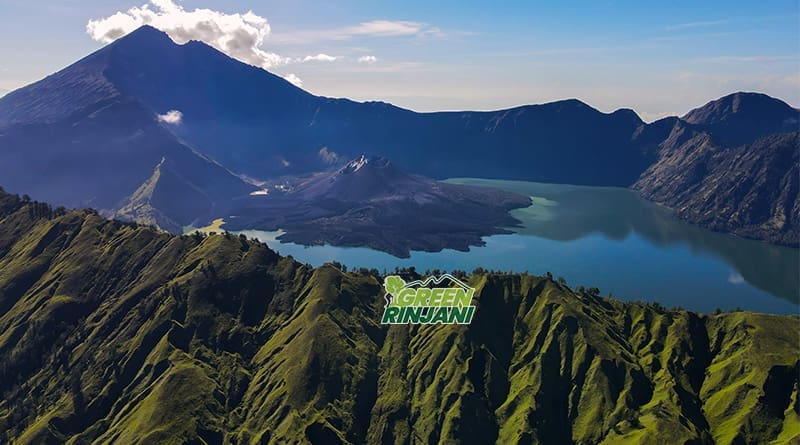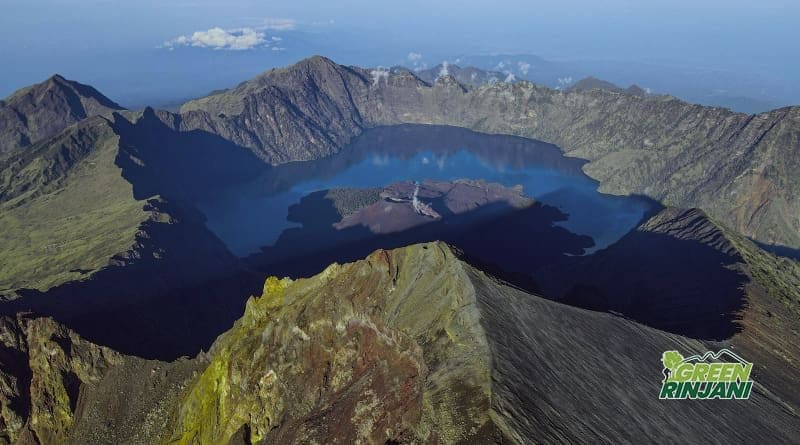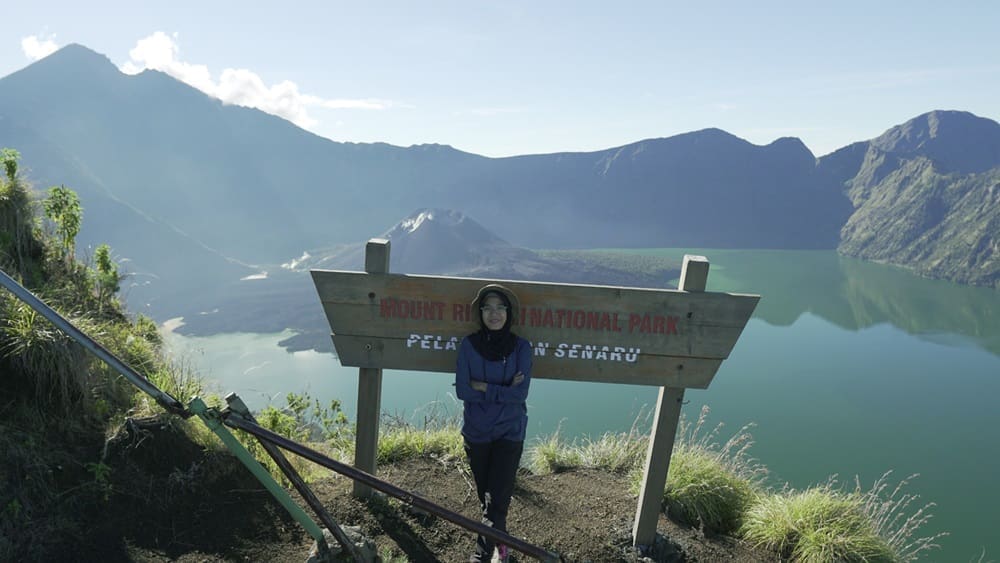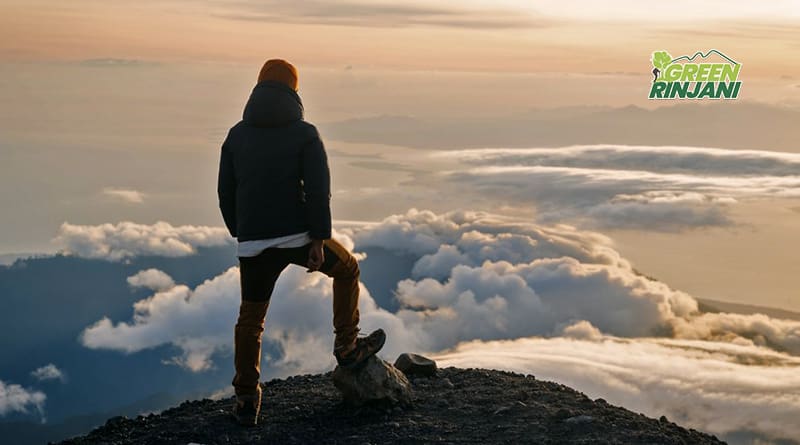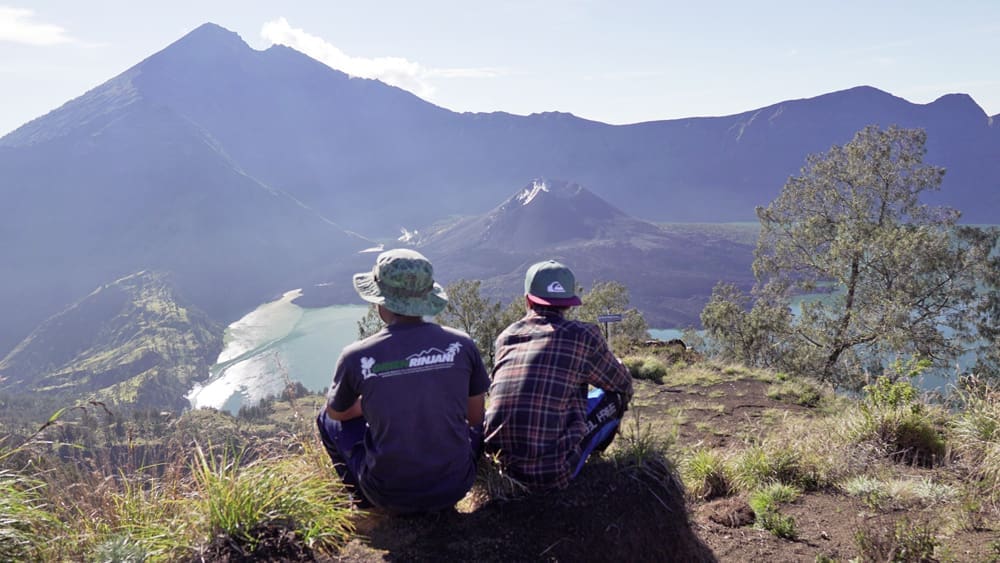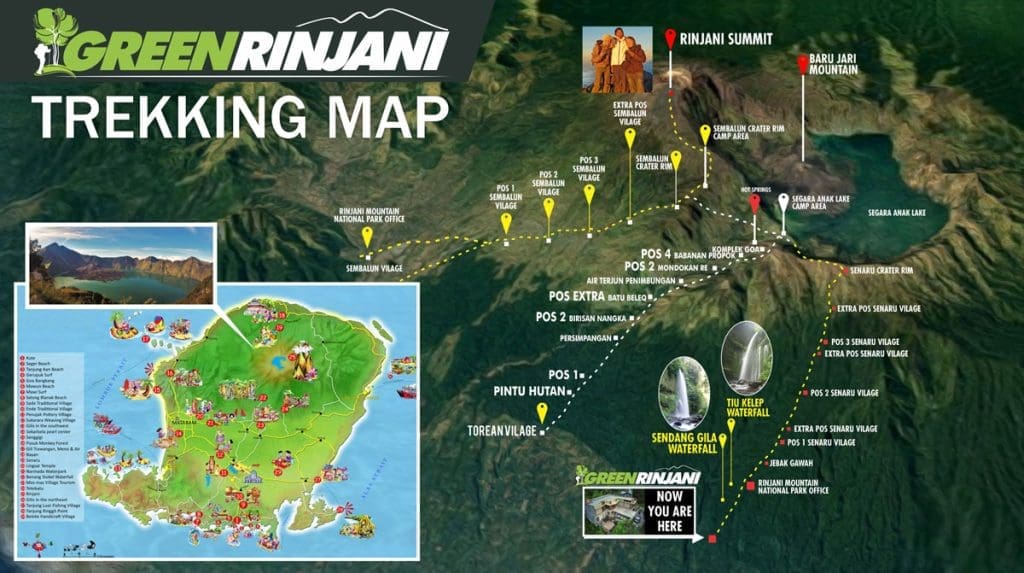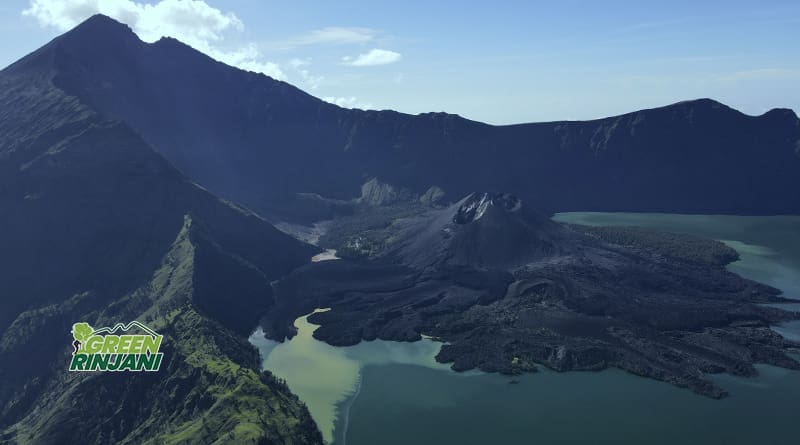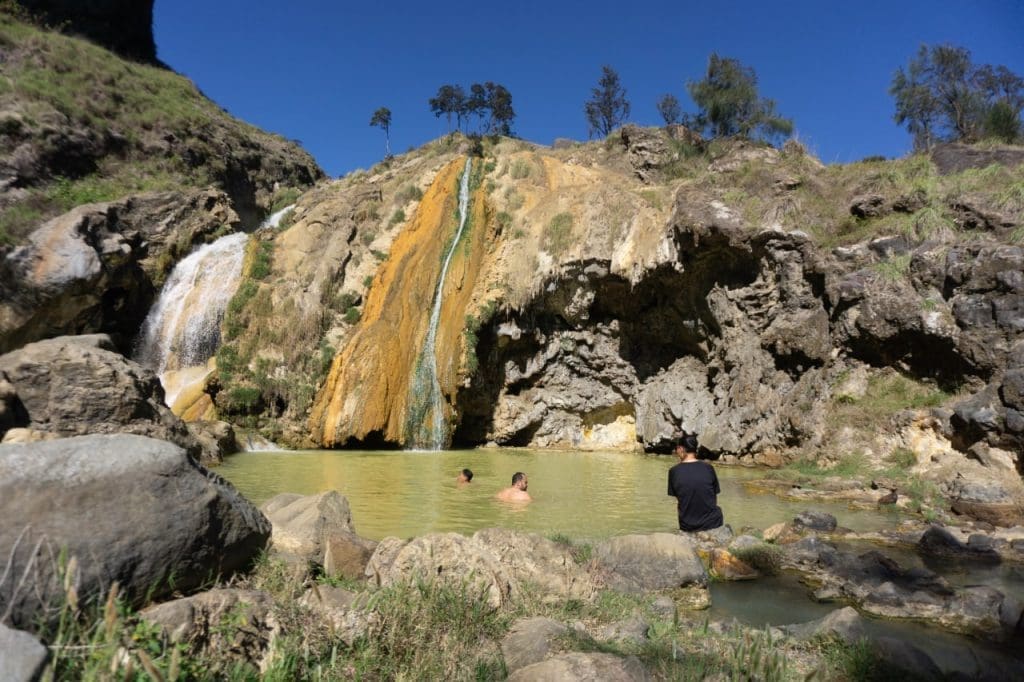History of Mount Rinjani – From Ancient Samalas to the Sacred Beauty of Lombok Island
History of Mount Rinjani
The history of Mount Rinjani is a remarkable story of nature’s transformation — from the ancient volcano of Samalas to the sacred and breathtaking mountain that now defines the island of Lombok.
Standing 3,726 meters above sea level, Rinjani is not only Indonesia’s second-highest volcano but also one of its most spiritually and geologically significant.
Over thousands of years, this mountain has shaped Lombok’s landscape, culture, and identity.
Its history combines the power of volcanic creation, the resilience of the local people, and the sacred legends that still live in the mists of its crater.
From the catastrophic eruption of Samalas in 1257 AD to the birth of Segara Anak Lake and Mount Barujari, Rinjani’s evolution tells a story not of destruction, but of renewal — the eternal balance between fire and life.
1. Origins – Mount Samalas Before Rinjani Was Born
Long before the name “Rinjani” appeared on maps, there stood a massive volcano called Mount Samalas.
It dominated northern Lombok, spreading fertile forests and streams across what are now the villages of Sembalun, Senaru, and Bayan.
Formed by the collision of the Indo-Australian and Eurasian tectonic plates, Samalas was part of the same volcanic chain that runs through Java and Bali.
Over thousands of years, layer after layer of lava built a giant stratovolcano, until one event reshaped it forever.
2. The 1257 Samalas Eruption – When Nature Redrew Lombok
In 1257 AD, Mount Samalas unleashed one of the most powerful volcanic eruptions in recorded history.
The explosion was so immense that its ash reached the stratosphere, spreading across the globe and slightly cooling Earth’s climate for several years.
While it was a catastrophic geological event, it also marked the beginning of something new.
The summit of Samalas collapsed, forming a vast caldera nearly eight kilometers wide — the natural basin that would become Segara Anak Lake.
Later, a smaller cone rose from within the lake, forming Mount Barujari, often called the “Child of Rinjani.”
Rather than being left in ruin, Lombok was renewed. The eruption’s ash enriched the soil, the caldera filled with pure water, and the mountain was reborn.
From that rebirth, the world gained what we now call Mount Rinjani.
3. From Samalas to Rinjani – The Birth of a Sacred Mountain
After the caldera and lake were formed, the new mountain was named Rinjani, believed to be derived from Dewi Anjani, the spiritual guardian of the mountain and protector of Lombok’s natural balance.
For the people of Lombok, especially the Sasak community, Rinjani became a symbol of purity, patience, and harmony with nature.
It is not just a majestic backdrop, but a sacred source of water, life, and livelihood for the island.
Streams that flow from Rinjani’s slopes form major rivers such as Kokok Putih and Kokok Rinjani, providing irrigation and clean water to thousands of hectares of farmland across northern and eastern Lombok.
For countless villages, Rinjani is the mountain that gives life – the island’s natural reservoir and guardian of fertility.
Beyond its ecological role, Rinjani is also an economic lifeline.
Every year, around 70,000 local and international visitors come to trek its slopes, supporting the livelihoods of guides, porters, homestays, farmers, and local businesses.
In many ways, Rinjani is not only a mountain – it is the beating heart of Lombok’s economy and culture.
Yet this beauty can only endure if it is cared for.
While many forests and mountains across Indonesia face deforestation, Mount Rinjani remains lush and green.
To protect it for the future, the government, local communities, and the Mount Rinjani National Park have launched the “Rinjani Go Zero Waste 2025” program – a joint commitment to make Rinjani a plastic-free trekking destination.
Trekkers are encouraged to bring back all their waste and respect the mountain’s pristine environment.
We all share the responsibility to keep Rinjani clean and thriving – not only as a destination, but as a living legacy of Lombok.
4. The Legend of Dewi Anjani – The Eternal Guardian
According to local legend, Dewi Anjani was a princess of the ancient Selaparang Kingdom who retreated into the mountain’s forest to meditate and seek enlightenment.
Her spirit ascended to the sacred realm, where she became the guardian of Rinjani, protecting those who climb with humility and good intention.
Many locals believe that Dewi Anjani’s presence can still be felt around Segara Anak Lake, especially during the Pekelem Ceremony, an annual ritual performed by Hindu and Sasak Wetu Telu communities.
Offerings of gold, silver, and prayers are made to honor the mountain and maintain balance between humans and the divine.
The legend gives Rinjani its soul — a reminder that this mountain is not only a geological wonder, but also a spiritual sanctuary.
5. The Gentle Tremor – Lombok’s 2018 Earthquake
As part of the Pacific “Ring of Fire,” Lombok naturally experiences geological movement.
In 2018, a series of moderate earthquakes affected the northern region, temporarily impacting the trekking routes around Rinjani.
Some trails were closed for safety inspections and restoration, but thanks to swift collaboration between the government, local communities, and tourism groups, the routes were quickly repaired and reopened.
Today, all major trails — especially Sembalun and Senaru — are fully accessible, safer, and more environmentally managed than ever before.
The event reminded locals and visitors alike that Rinjani is a living mountain — dynamic, yet resilient. Its beauty remains untouched, and its spirit continues to inspire all who visit.
6. Science and Wonder – Understanding Mount Rinjani
Today, Mount Rinjani is one of the most studied volcanoes in Indonesia.
Scientists have discovered that it is part of a complex volcanic system connected to the Flores Back-Arc Thrust Fault, explaining both its volcanic and seismic nature.
The Center for Volcanology and Geological Hazard Mitigation (PVMBG) monitors Rinjani closely through modern seismic stations.
Thanks to this ongoing observation and management, trekking Rinjani remains safe, organized, and environmentally sustainable.
Each step up its slopes is a journey through natural history — a living classroom where science meets serenity
7. Rinjani Today – A Mountain Worth Climbing
To climb Rinjani is to walk through thousands of years of Earth’s story.
The journey takes you across savanna hills, volcanic ridges, and the mesmerizing Segara Anak Lake, where the blue water meets the clouds.
Reaching the summit at sunrise is an unforgettable moment — not just for the view, but for the deep sense of connection with nature and the timeless rhythm of the planet.
Rinjani is more than a trekking destination; it is a journey of understanding, reflection, and gratitude.
8. Global Recognition – A UNESCO Global Geopark
In 2018, Mount Rinjani was officially declared a UNESCO Global Geopark, acknowledging its geological significance, ecological richness, and cultural depth.
This recognition celebrates Rinjani as one of the world’s best examples of harmony between people and nature.
The management of the national park now involves collaboration between government authorities, local communities, and eco-tourism partners — ensuring that conservation and tourism grow hand in hand.
Rinjani stands today as a symbol of sustainable travel and natural heritage for Indonesia and the world.
9. Reflection – Lessons from the History of Mount Rinjani
The history of Mount Rinjani is a lesson in transformation.
From the ancient mountain of Samalas to the Rinjani we know today, every stage of its evolution carries a message: that creation often follows change, and renewal follows challenge.
Rinjani teaches respect — for nature’s power, for community resilience, and for the delicate balance that sustains life.
Every trek up its slopes is not just an adventure, but a journey into the story of Earth itself.
“Rinjani is not a symbol of destruction, but of rebirth and harmony.”
10. Timeline – Key Moments in the History of Mount Rinjani
Why You Should Visit Mount Rinjani
- The story of Mount Rinjani is not only written in history books or ancient legends — it is still alive today, waiting to be experienced by every traveler who sets foot on Lombok.
Each trail, each sunrise, and each whisper of the wind tells a story that began thousands of years ago, when fire and earth gave birth to this magnificent mountain. - Climbing Rinjani is more than a physical adventure — it’s a journey into a living world where nature, culture, and spirit unite.
From the open savannah of Sembalun, the cool rainforest of Senaru, to the shimmering blue of Segara Anak Lake, the landscape changes with every step, revealing the many faces of Lombok’s soul. - Visitors are often captivated not only by the scenery but also by the warmth of the local people.
The Sasak communities around the mountain still hold deep respect for Rinjani — offering prayers before each climb, sharing local meals with visitors, and teaching that the true meaning of trekking is not to conquer the peak, but to connect with nature and oneself. - What makes Rinjani truly special is the harmony between adventure and tranquility.
Here, you can watch the sunrise from 3,726 meters above the sea, feel the clouds drift below your feet, and bathe in the natural hot springs beside Segara Anak — a gift from the volcano itself.
Every moment brings you closer to the essence of Lombok: peace, strength, and simplicity. - Today, Mount Rinjani is also a symbol of sustainable tourism. Through programs like
Rinjani Go Zero Waste 2025
and community-based trekking management, every visitor becomes part of a larger mission — to protect one of Indonesia’s most beautiful national parks for future generations.
If you have ever dreamed of exploring a place where the Earth tells its own story, where beauty and humility coexist, and where every sunrise feels like a new beginning — Mount Rinjani is waiting for you
Experience Rinjani, Experience Lombok’s Spirit
The best way to understand Lombok is to walk on the paths of Rinjani.
It is a mountain that welcomes you with open skies, endless horizons, and the gentle strength of nature that has shaped this island for millennia.
Come and witness what words can only describe — the living history, the breathtaking landscapes, and the sacred silence that makes Mount Rinjani one of the most unforgettable trekking experiences in the world
Conclusion – The Eternal Mountain of Lombok
From the ancient fire of Samalas to the sacred calm of modern Rinjani, this mountain tells one of the most powerful stories in Indonesia’s natural and cultural history.
It is a story of rebirth and resilience — where science meets legend, and every trail reveals harmony between earth, spirit, and humanity.
Mount Rinjani is more than a destination. It is a place to feel, to learn, and to be transformed.
Here, you can walk through landscapes shaped by time. You can rest beside the shimmering waters of Segara Anak Lake, or greet the sunrise from 3,726 meters above the sea — a moment where heaven and earth seem to meet.
For the people of Lombok, Rinjani is the source of water, life, and inspiration.
For travelers, it is a living classroom that teaches respect, patience, and wonder.
Each moment on this mountain reminds us that nature’s power is not only to destroy. It also has the strength to create, to heal, and to inspire new life.
Therefore, Rinjani remains one of the most extraordinary trekking destinations in Asia. It is admired not only for its scenery but also for the spiritual connection it awakens in every traveler.
Plan Your Journey to Mount Rinjani
Whether you come to reach the summit, explore the crater lake, or simply enjoy the silence of nature, your journey to Rinjani will stay with you forever.
Every sunrise, every step, and every breath on this mountain carries meaning. As you walk through the mist and along the ancient trails, you become part of Rinjani’s living story.
Visit Mount Rinjani and experience the soul of Lombok — a place where every change brings new life, and every traveler discovers a piece of themselves.

